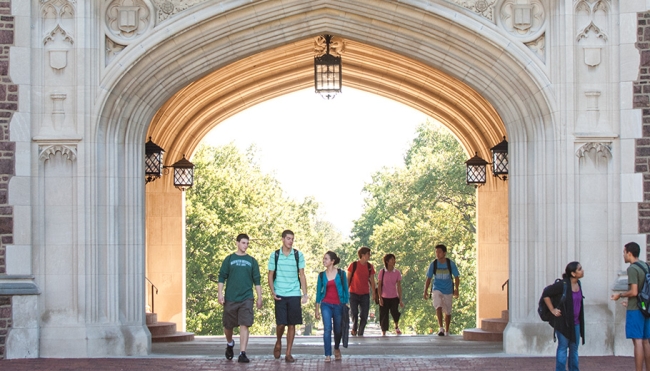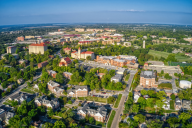You have /5 articles left.
Sign up for a free account or log in.

Washington U in St. Louis
Washington University in St. Louis announced Monday that it is joining a select group of private colleges and universities that admits students without any regard to whether they can afford to attend. By becoming need blind, Washington University is embracing a policy of the Ivy League, Stanford University, the University of Chicago and about 60-plus colleges and universities.
The most recent such announcement was by Johns Hopkins University, which acted on the basis of a $1.8 billion gift from Michael Bloomberg in 2018. More common in recent years have been moves away from need-blind admissions. Clark University in 2012, the College of the Holy Cross in 2019, Haverford College in 2016 and Wesleyan University in 2012 all dropped need-blind admissions. Lawrence University in 2014 announced that going need blind was a major focus of a fundraising campaign. Lawrence met its goals for raising money in the campaign this year but announced that -- upon further review -- it would need still more money to go need blind.
Costs were cited by all the colleges that dropped the policy.
At Washington University, Chancellor Andrew D. Martin said the university was committing $1 billion to pay for the new policy ($200 million of it will go to graduate and professional students). He said that the university's financial position was greatly strengthened by the 65 percent return on its endowment in 2020-21, bringing it to $15.3 billion.
“Since I became chancellor nearly two years ago, becoming need blind has been a top priority,” Martin said. “Building on the momentum that began with our previous administration, we’re finally making it happen. This is a proud moment for us as an institution and I’m grateful to all who have contributed along the way, including generous donors who have provided scholarships and other financial support for our students.”
He added, “At the same time, however, our work is far from done. Admitting the best students from all socioeconomic backgrounds is obviously the first step. Making sure they have the support and resources to succeed once they’re here is also critical. We must redouble our efforts to provide all of our students with the tools they need to thrive and participate fully in our world-class educational experience while on campus.”
Washington University currently does not admit as many students who need financial aid as many other institutions -- only 36 percent of students admitted this year and last needed aid. In 2020-21, the basic undergraduate tuition rate was $56,300, plus another $1,000 in required fees and average room and board of $17,402.
The university has been criticized for years for not admitting as many low-income students as it could.
The university was first in the nation in a New York Times study of the Class of 2013 that examined colleges with the greatest difference between the percentage of students from the top 1 percent of family wealth (21.7 percent) and the percentage from the bottom 60 percent (6.1 percent).
“We want to make WashU accessible to every qualified student,” said Ronné Patrick Turner, vice provost for admissions and financial aid. “We do this by removing barriers to admission and providing financial resources to make sure all students are able to attend, regardless of their ability to pay. We’ve long aimed to become a need-blind institution and this is a huge step forward for us.”








